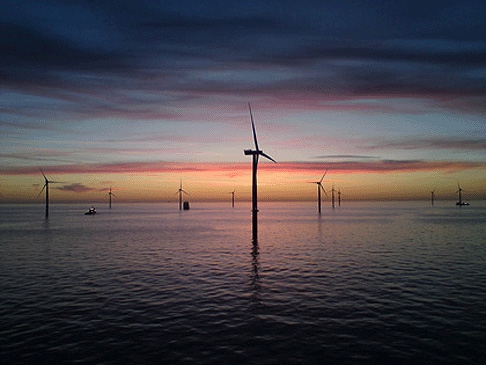
This is the claim of researchers at Birmingham University who said their development could also support the increase of wind energy use world-wide.
According to the University, the 'smart' system uses the variable speed of the rotors in wind turbine systems to more closely regulate the supply of power to the grid: when electricity demand is high, stored kinetic energy in the turbines can be used intelligently to keep the grid stable.
Regulating the supply of electricity to keep pace with demand is a continual challenge. Sudden outage of power generation, such as when a generator gets damaged, can cause a 'frequency dip', which can lead to power cuts. The UK's large power stations currently manage these dips by pushing out more electricity.
However, as more wind turbines are integrated into the system, it becomes more difficult to balance supply and demand and keep the system stable, as frequency dips in national power grid occur more quickly and more severely than before when wind generation became such a significant element of electricity generation.
In a statement, lead researcher Prof Xiao-Ping Zhang, Director of Smart Grid in the Birmingham Energy Institute, said: "By 2030 wind is expected to provide half the UK's power, so it's important that we can use the wind farms provide a vital safety mechanism of controlling frequency dips of UK's national power grid. Our proposed frequency control system for wind turbines could revolutionise the UK's power grid's frequency control and, importantly, uses our existing infrastructure of wind turbines and it will not need additional devices and investments."
A power cut in August 2019 caused blackouts across the Midlands, South East, South West, North West and North East of England, and Wales. The incident was triggered by two almost simultaneous unexpected power losses at Hornsea and Little Barford due to lightning strikes.
Power was restored after 40 minutes, but problems on the rail network carried on over the weekend. In this situation, frequency control response services from wind turbines, would have protected the national grid system from the power cut.
"As the UK increases its reliance on wind power, it will become even more important to find effective ways to use the turbine systems to provide this service and maintain effective regulation of the grid,” said Professor Zhang. “Current methods of using wind turbines to regulate electricity struggle to provide consistent support because of variable wind speeds and other system conditions.”
The Birmingham team’s results are published in IEEE Open Access Journal of Power and Energy. They said they have validated their approach in an industry-standard power grid simulator and are seeking industrial partners to explore commercial opportunities for the technology.
University of Birmingham Enterprise has applied for a patent to protect the system.





Swiss geoengineering start-up targets methane removal
No mention whatsoever about the effect of increased methane levels/iron chloride in the ocean on the pH and chemical properties of the ocean - are we...